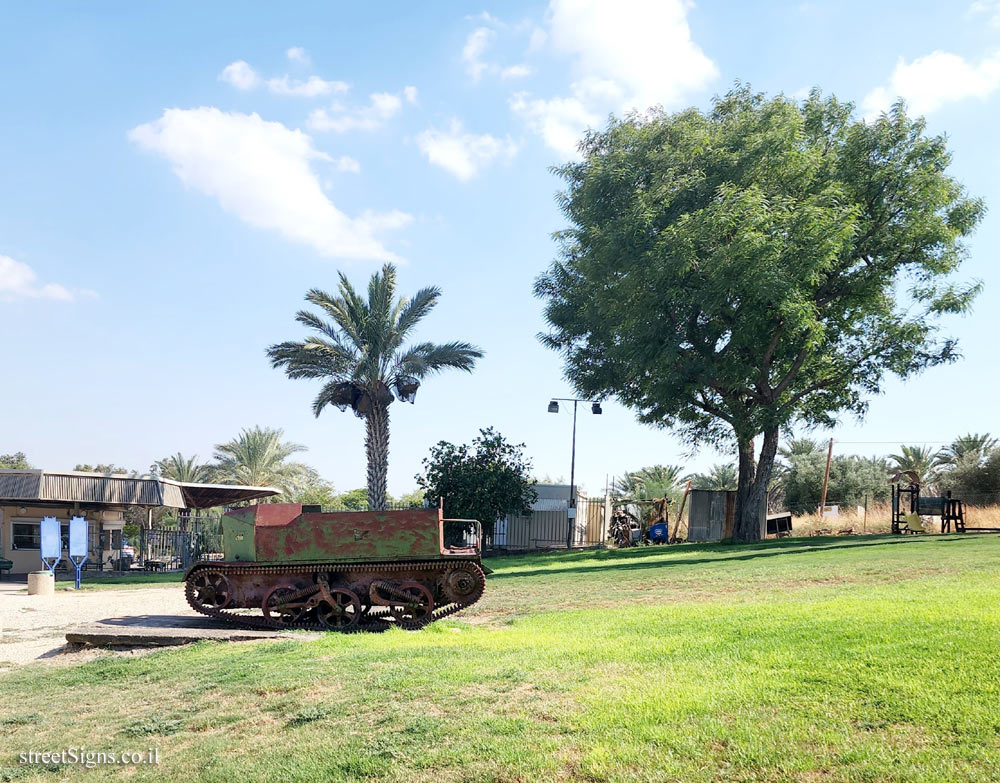The sign shape is rectangular but its head is designed according to the silhouette of the old building of the Gymnasia Herzliya, which serves as a logo of the Council for the Preservation of Heritage Sites in Israel
The place was photographed on the same day by the same photographer
 Click for a larger image Translation of the text on the sign
Click for a larger image Translation of the text on the sign:
Symbol of the Council for the Preservation of Israeli Heritage Sites
Symbol of the National Fund for Israel
The symbol of the Valley of the Springs - Beit Shean Valley Regional Council
The symbol of Naharim at the bridge
The old Gesher yard Gesher lands, together with Menachemiya lands were bought in 1800 by the JCA (Jewish Colonisation Association) company. In the summer of 1920, the group of "Bashkirs" settles the point.
In 1924, the "Ahadot" group established here the farm of Gesher (Gesher = Bridge in Hebrew) on the ruins of an ancient khan from the Middle Ages. The name is given after the nearby Jordan bridge: Jasr al-Majma (the meeting bridge), which is an important crossroads. The group that lived here moved in 1936 and founded Ashdot Ya’akov. It was replaced in 1939 by the "Working Youth Group Gesher". This group sat here during the War of Independence.
On April 27-29, 1948, the Arab-Jordanian Legion and irregular forces attacked the kibbutz and the nearby police building. It was only on the second night of the battles that the children were taken out on foot to Ashdot Ya’akov and from there they were transferred to Mamar in Haifa. On the third day, the Jordanians submitted an ultimatum to the kibbutz for evacuation. The answer was negative. And the fighting did not resume immediately.
With the declaration of the state on 14.5.1948, the invasion of the Iraqi army of its two brigades was focused here. The Iraqi force could not the defenders of the place, the members of the kibbutz and the reinforcement of the Jordan Valley interfaces and the soldiers of Golani’s 12th ("Barak" = "Lightning") Battalion. The settlement was under siege, completely destroyed, but not captured. It was used as a signpost and was held by the members until the end of the War of Independence.
In the spring of 1949, the cornerstone of the new Gesher was laid, and only after a year did the children return and the families reunited.

 Click for a larger image
Click for a larger image